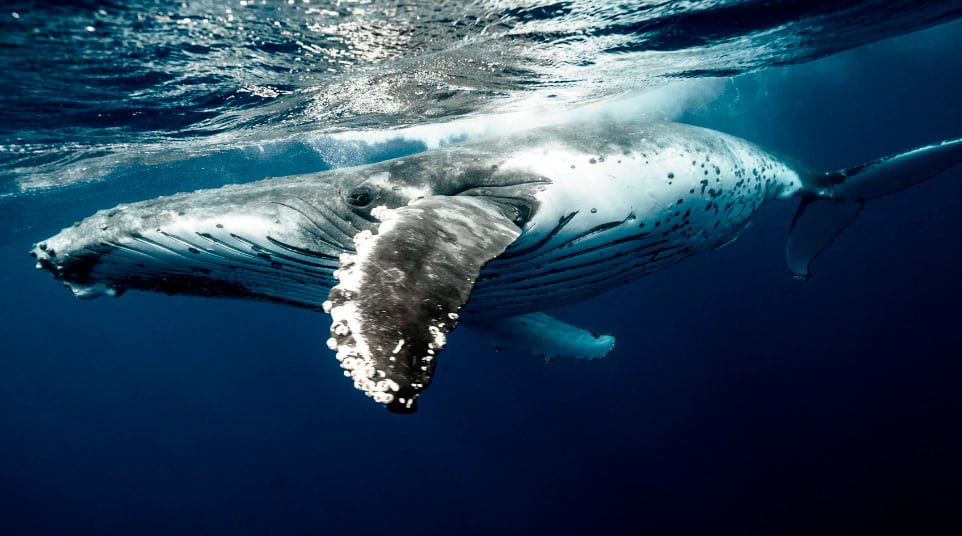- Home >
- Travel Guide >
- Galapagos Islands >
- Animals & Wildlife >
- Galapagos Humpback Whale
Name: Galapagos Humpback Whale
Family: Baleanopteridae
Scientific Name: Megaptera novaeangliae
Length: Adults range in length from 12 – 19 meters (40 – 70 feet)
Weight: 36,000 kilograms (79,000 pounds)
Adult Length: 11-15 m (36 - 49 ft)
Blow: Variable; tall, vertical and bushy
Breaching: Yes, usually landing on back
Deep dive: Body generally arches high before broad mil flukes are raised to reveal variable pale underside to tail
Group size: 1-3, sometimes more when feeding
Category: Rorqual Whales
All 6 of the world's species or Rorqual whales have been recorded in Galapagos. The rorqual whales are large to very large, and include the biggest animals on earth. They differ from all other cetaceans in the region because they do not possess teeth. Instead, their upper jaws are lined with bony 'comb-like' plates called baleen which filter out small fish or zooplankton as the whale engulfs enormous quantities of seawater whilst swimming aIong. Rorquals have a double blowhole (single in toothed cetaceans), placed centrally on top of the head, a pleated throat capable of great expansion whilst feeding, a 'U'- to 'V'-shaped flattened head and a streamlined body for fast swimming.
Occasional inshore and offshore.
Identification:
Although similar to the other rorquals in size, the Humpback Whale is one of the most distinctive species. lts scientific name means 'Big winged New Englander', a description referring to its huge flippers which are over 3m long. Surfacing sequence is slow, the head is covered in raised knobs and the body is robust and bulky, with a low, sloping and broad-based dorsal fin. The back behind the fin, like the Sperm Whale, shows a series of knuckles along its ridge.

